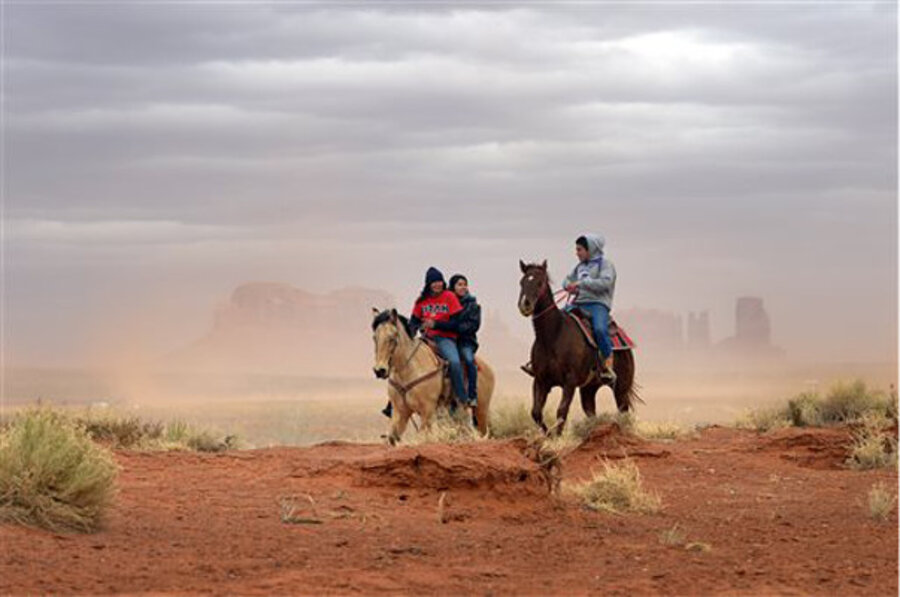Navajo Nation wins record-setting $554 million from US government
Loading...
| FLAGSTAFF, Ariz.
The Navajo Nation is poised to receive $554 million from the federal government over allegations of mismanagement of tribal resources in the largest settlement of its kind for an American Indian tribe.
Much of the land on the sprawling reservation has been leased for uses such as farming, grazing, oil and gas development, mining, and housing.
The leases once were largely overseen by the US government, which mismanaged the revenue and failed to properly invest and account for it, according to the tribe.
US Interior Secretary Sally Jewell is scheduled to visit Window Rock, Arizona, the Navajo Nation capital, to formalize the deal Friday.
She released a statement Thursday saying the agreement strengthens ties between the Navajo and US governments and helps empower the tribe's communities.
Navajo officials hailed the settlement as a positive end to a long ordeal. President Ben Shelly, in a statement, called it "a victory for tribal sovereignty."
The tribe agreed to settle the case months ago but has been awaiting approval from federal agencies before the deal could be finalized. The Navajo Nation originally sought $900 million when the lawsuit was filed in 2006.
The 27,000-square-mile reservation is larger than any American Indian land base, and covers sections of Arizona, New Mexico and Utah. Almost two-thirds of the 300,000 Navajos live on the reservation that has some of the most iconic landscapes in the Southwest and is rich in natural resources.
Public meetings will be held starting in October to seek community input on how the money should be spent, Navajo Nation Council Delegate Lorenzo Curley said. Some tribal members want the funds set aside for future generations or used for business development, he said.
Deswood Tome, an adviser to Shelly, said the money could help with housing, water, roads, power line extensions, and other infrastructure needs. "There's a critical housing shortage on the Navajo Nation," Tome said.
About 70 percent of the roads on the reservation are unpaved, an estimated 16,000 families don't have electricity, and many more don't have telephone service, water, or natural gas services, according to the tribal utility provider.
Andrew Sandler, a Navajo Nation attorney, said the tribe has taken on much of the responsibility for leasing on its land. He said federal mismanagement of natural resource extraction prevented the tribe from receiving royalty payments it was due. He said federal officials also failed to appropriately invest the proceeds from natural resource contracts.
The settlement "was a good result for all parties, an appropriate result for all parties," he said. "And it creates finality," Sandler said.
If further disputes arise with the federal government, the settlement outlines a resolution process.
The deal comes amid a flurry of similar, though smaller, settlements. The Navajo Nation settlement exceeds the next highest amount by $170 million, Sandler said.
Tribes across the country have filed more than 100 breach-of-trust cases against the US government. Since October 2010, the Obama administration has settled about 80 cases, totaling more than $2 billion. The Interior Department said it is working to resolve cases with other tribes without going to trial.
Hundreds of thousands of Native Americans, meanwhile, received final cash payments last week in one of the largest settlements involving individual trust funds in US history.
The $3.4 billion Cobell settlement, named for Elouise Cobell of Browning, Montana, resolves a class action lawsuit over billions of royalties lost from the accounts of individual Indians.
Sandler called the Navajo and Cobell settlements "probably the two most important resolutions of claims against the US government by American Indians or sovereign tribes."
Sandler said the Navajo Nation should receive its money within 60 days.
___
Terry Tang reported from Phoenix.







